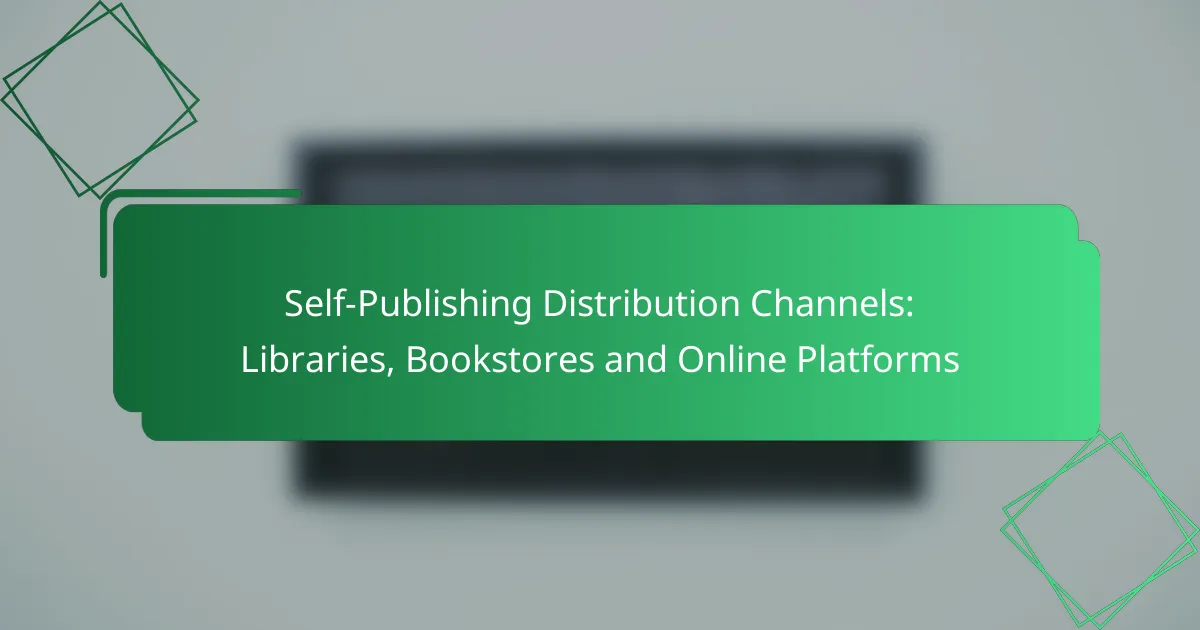Self-publishing offers a variety of distribution channels, including libraries, bookstores, and online platforms, each with distinct benefits for authors. By understanding these avenues, writers can effectively target their audience and enhance their book’s visibility. Whether through digital platforms, physical donations, or popular online services like Amazon and Smashwords, choosing the right distribution strategy is crucial for success.
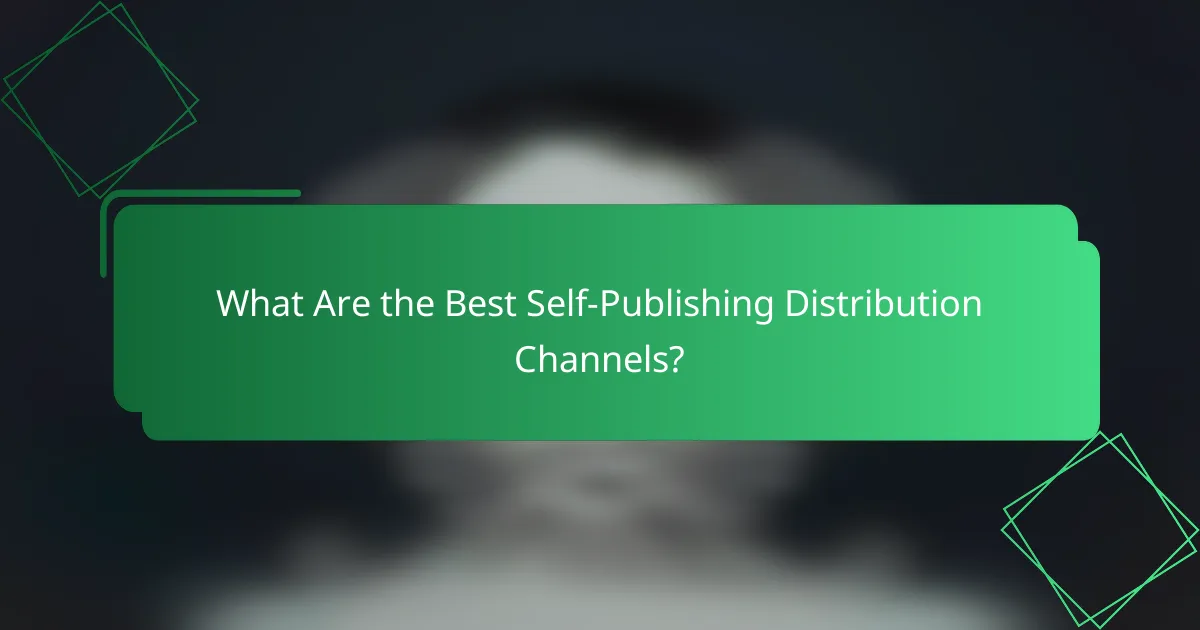
What Are the Best Self-Publishing Distribution Channels?
The best self-publishing distribution channels include libraries, bookstores, and online platforms, each offering unique advantages for reaching readers. Choosing the right channels depends on your target audience, marketing strategy, and the type of book you are publishing.
Libraries
Libraries are an essential distribution channel for self-published authors, providing access to a broad audience without upfront costs to readers. Many libraries participate in programs like OverDrive or Hoopla, allowing patrons to borrow eBooks and audiobooks.
To get your book into libraries, consider using services like IngramSpark or Baker & Taylor, which facilitate library distribution. Additionally, offering a print version can increase your chances of being selected for library collections.
Bookstores
Bookstores can be a valuable channel for self-published authors, especially local independent shops that often support local talent. To sell your book in bookstores, you may need to establish a consignment agreement or work with distributors that have relationships with retailers.
Be prepared to provide promotional materials and possibly host events or signings to boost visibility. Keep in mind that major chains may have more stringent requirements, so targeting smaller, community-focused bookstores can be more effective.
Online Platforms
Online platforms like Amazon, Barnes & Noble, and Kobo dominate the self-publishing landscape, offering authors a straightforward way to reach global audiences. These platforms allow you to publish eBooks and print-on-demand paperbacks, making it easy to manage inventory and distribution.
Utilizing online platforms often involves understanding their specific algorithms and marketing tools. Consider enrolling in programs like Kindle Unlimited to increase visibility and sales, but be aware of exclusivity requirements.
Hybrid Models
Hybrid models combine elements of traditional publishing with self-publishing, allowing authors to leverage multiple distribution channels. For example, you might sell your book online while also partnering with local bookstores and libraries.
This approach can maximize exposure and sales potential. However, it requires careful planning and coordination to manage different formats and distribution agreements effectively.
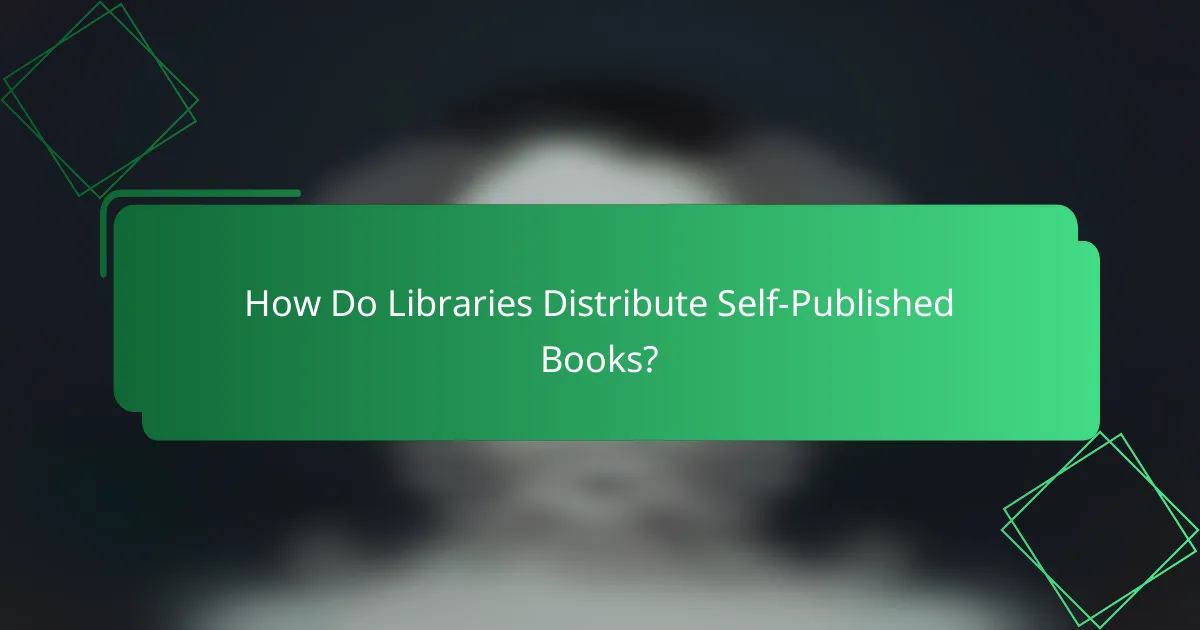
How Do Libraries Distribute Self-Published Books?
Libraries distribute self-published books primarily through digital platforms, physical donations, and partnerships with authors. Understanding these channels can help authors effectively reach library patrons and increase their book’s visibility.
Library eBook Platforms
Many libraries utilize eBook platforms like OverDrive, Libby, and Hoopla to distribute digital content, including self-published works. Authors can submit their eBooks to these platforms, often through aggregators that handle distribution to multiple libraries simultaneously.
When submitting to eBook platforms, ensure your book meets the required formatting and quality standards. Pricing models may vary, with some libraries purchasing a limited number of copies or offering a subscription model for patrons.
Physical Book Donations
Authors can donate physical copies of their self-published books to libraries, which can help increase local visibility. Many libraries welcome donations, especially if the books align with their collection goals and community interests.
Before donating, check with the library’s policy on donations, as some may have specific guidelines or restrictions. Consider including a personalized note or promotional materials to engage readers and encourage them to explore your work further.
Library Partnerships
Establishing partnerships with local libraries can provide authors with opportunities for events, readings, and workshops. Collaborating with libraries can enhance your book’s exposure and create a community around your work.
To initiate a partnership, reach out to library staff with a proposal that outlines potential benefits, such as hosting an author talk or offering writing workshops. Be prepared to discuss how your work can contribute to the library’s mission and engage its patrons.
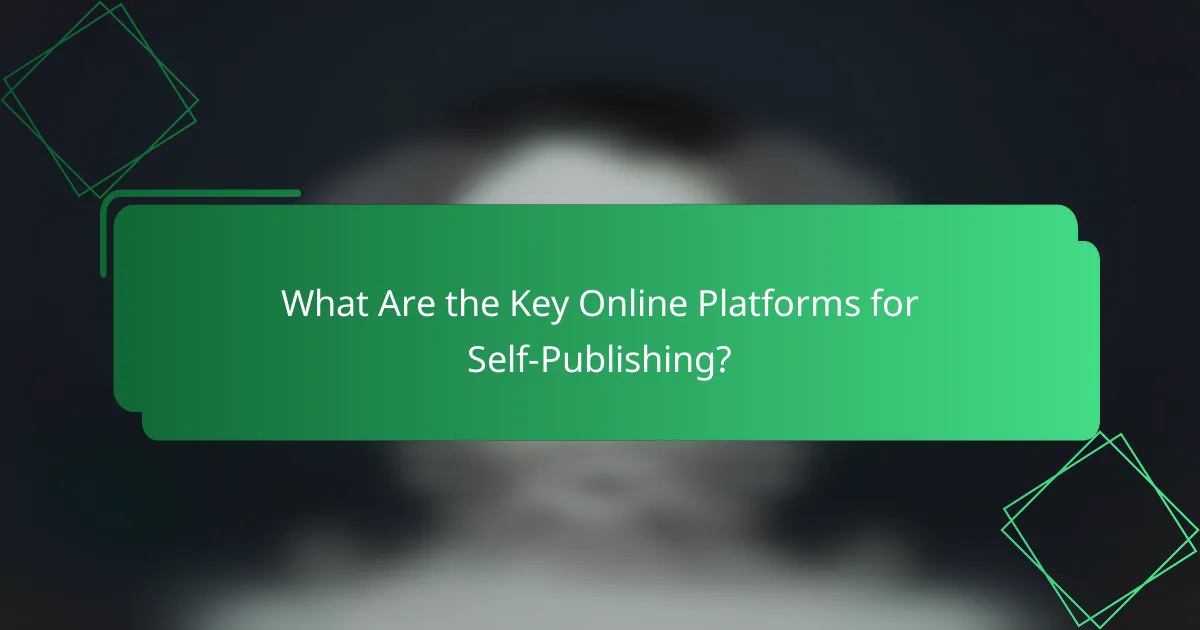
What Are the Key Online Platforms for Self-Publishing?
The key online platforms for self-publishing include Amazon Kindle Direct Publishing, Smashwords, and Kobo Writing Life. Each platform offers unique features and distribution options that cater to different author needs and preferences.
Amazon Kindle Direct Publishing
Amazon Kindle Direct Publishing (KDP) is one of the most popular self-publishing platforms, allowing authors to publish eBooks and paperbacks directly to Amazon. KDP offers a straightforward setup process, enabling authors to reach millions of readers worldwide.
Authors can earn up to 70% royalties on eBooks priced between $2.99 and $9.99, while paperback royalties are typically around 60% after printing costs. It’s crucial to optimize your book’s metadata and cover design to enhance visibility on Amazon’s marketplace.
Smashwords
Smashwords is a versatile platform that distributes eBooks to various retailers and libraries, including Apple Books and Barnes & Noble. It provides authors with a wide reach through its distribution network, making it a great choice for those looking to maximize exposure.
Authors retain 80% of the sales revenue from their eBooks sold through Smashwords, but they must adhere to specific formatting guidelines to ensure their books are accepted. Utilizing Smashwords’ marketing tools can help increase sales and visibility.
Kobo Writing Life
Kobo Writing Life is an author-friendly platform that allows writers to publish eBooks and reach readers in over 190 countries. Kobo focuses on international markets, making it an excellent option for authors targeting global audiences.
With Kobo, authors can set their own prices and earn up to 70% royalties on eBook sales. The platform also offers promotional opportunities and a user-friendly dashboard for tracking sales and performance. It’s advisable to explore Kobo’s promotional tools to enhance your book’s market presence.
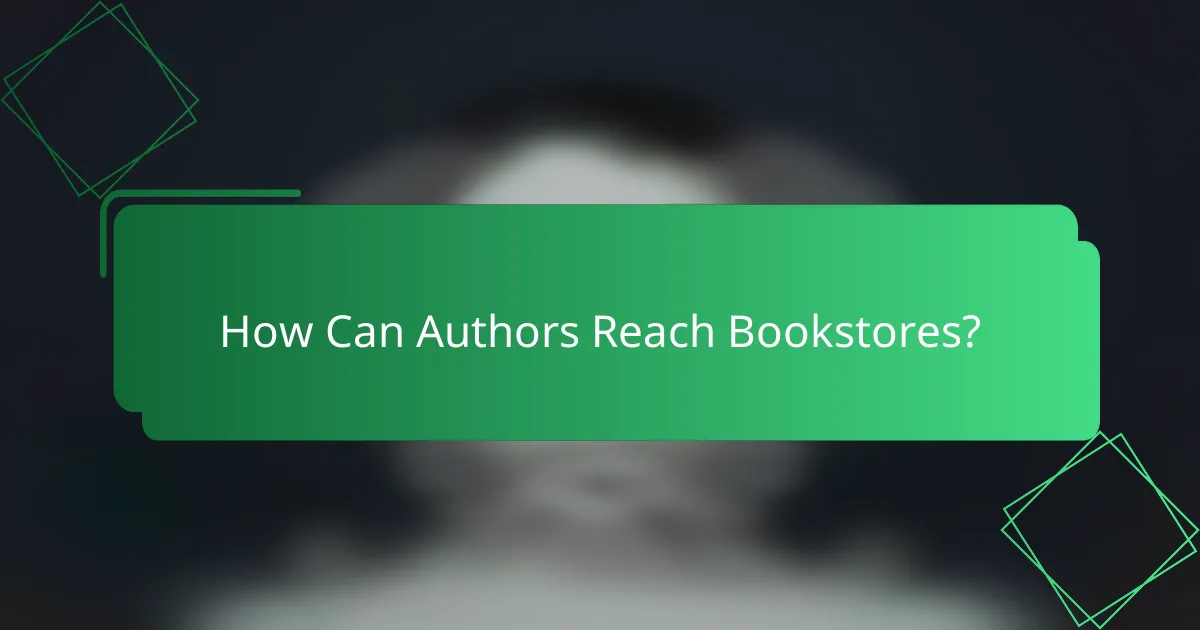
How Can Authors Reach Bookstores?
Authors can reach bookstores through various methods, including direct sales, distribution services, and consignment agreements. Each approach has its own advantages and considerations that can impact an author’s success in getting their books onto store shelves.
Direct Sales
Direct sales involve authors selling their books straight to bookstores without intermediaries. This method allows authors to retain a larger percentage of the profits, but it requires them to manage inventory and logistics. Authors should consider approaching local independent bookstores, as they may be more open to supporting local authors.
When engaging in direct sales, authors should prepare a compelling pitch and provide promotional materials, such as bookmarks or flyers, to help sell their books. Establishing a relationship with bookstore owners can also lead to future opportunities for events or signings.
Distribution Services
Distribution services act as intermediaries that help authors get their books into a wider range of bookstores. These services often have established relationships with retailers and can streamline the process of inventory management and shipping. Authors should research various distribution companies to find one that aligns with their goals and budget.
Many distribution services charge fees or take a percentage of sales, so authors need to weigh the costs against the potential reach. Popular options include IngramSpark and Baker & Taylor, which cater to both independent and larger chain bookstores.
Consignment Agreements
Consignment agreements allow authors to place their books in bookstores without upfront costs. In this arrangement, the bookstore only pays the author for books sold, returning unsold copies after a set period. This can be a low-risk option for authors looking to enter the market.
However, authors should be aware that bookstores may be selective about which titles they accept on consignment. It’s essential to have a clear agreement outlining terms, such as the duration of the consignment and the percentage of sales the bookstore will retain. Regular follow-ups can help maintain the relationship and ensure better sales tracking.
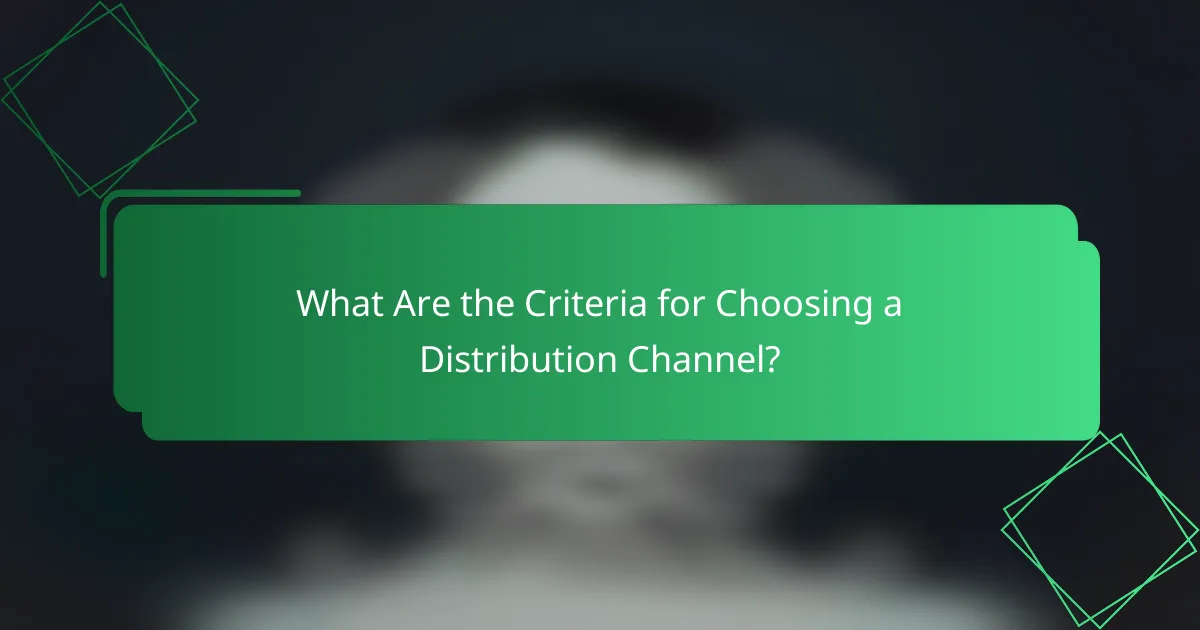
What Are the Criteria for Choosing a Distribution Channel?
Choosing a distribution channel for self-publishing involves evaluating several key criteria, including target audience, cost considerations, and sales potential. Each factor plays a significant role in determining the most effective way to reach readers and maximize book sales.
Target Audience
Identifying your target audience is crucial when selecting a distribution channel. Consider where your readers typically shop for books—whether in physical bookstores, libraries, or online platforms. Tailoring your approach to the preferences of your audience can significantly enhance your book’s visibility and sales.
For instance, if your target audience consists of young adults, online platforms like Amazon or social media promotions may be more effective. Conversely, if your book appeals to local communities or niche markets, partnering with independent bookstores or libraries might yield better results.
Cost Considerations
Cost is a vital factor in choosing a distribution channel, as different options come with varying expenses. Online platforms often charge fees based on sales percentages, while traditional bookstores may require upfront costs for consignment or shelf space. Libraries might have specific budget constraints that affect how many copies they can purchase.
When evaluating costs, consider both direct expenses and potential returns. For example, while online platforms may have lower initial costs, they can also have higher competition, which might impact overall sales. Balancing these factors will help you make an informed decision.
Sales Potential
Assessing the sales potential of each distribution channel is essential for maximizing your book’s reach. Online platforms generally offer broader access to a global audience, while physical bookstores may provide a more localized touch that can foster community engagement.
To gauge sales potential, research similar titles in your genre and their performance across various channels. Additionally, consider seasonal trends and promotional opportunities, such as book fairs or local events, which can enhance visibility and drive sales. Understanding these dynamics will help you select the most promising distribution strategy for your book.
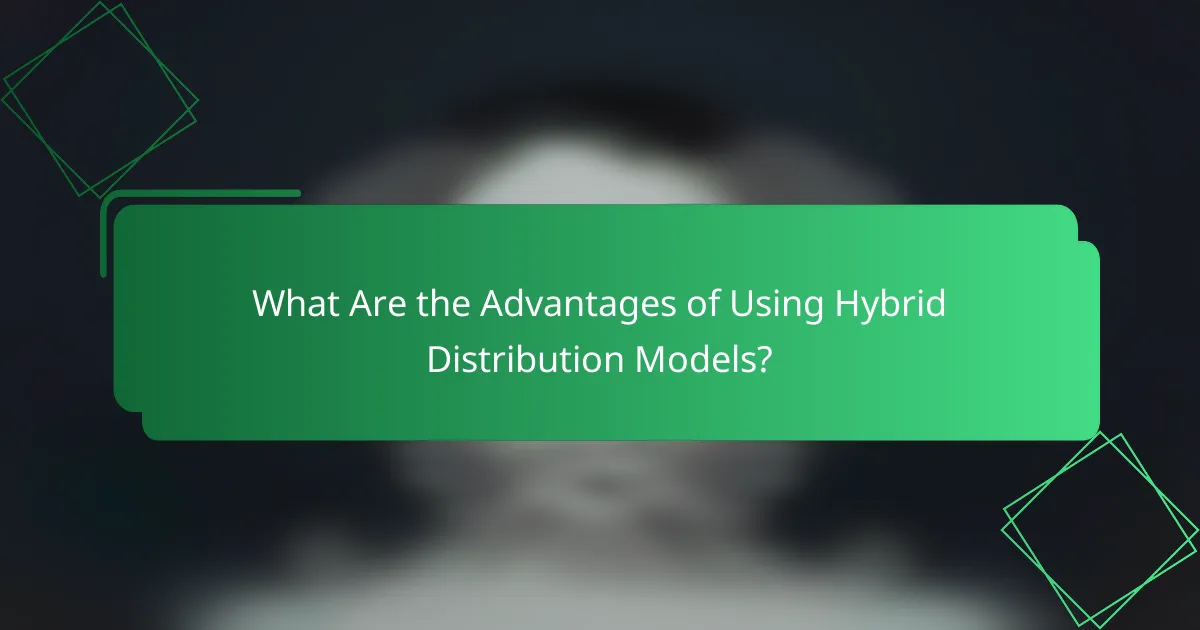
What Are the Advantages of Using Hybrid Distribution Models?
Hybrid distribution models combine various channels such as libraries, bookstores, and online platforms, offering authors a broader reach and increased sales potential. This approach allows for flexibility in marketing strategies and can cater to diverse reader preferences.
Access to Diverse Audiences
Utilizing hybrid distribution models enables authors to tap into different reader demographics. Libraries can attract local patrons, while bookstores cater to community shoppers, and online platforms reach global audiences. This variety increases visibility and potential sales across multiple segments.
Increased Revenue Streams
By leveraging multiple distribution channels, authors can create various revenue streams. For instance, sales from physical bookstores can complement digital sales from online platforms. This diversification helps mitigate risks associated with relying solely on one channel.
Enhanced Marketing Opportunities
Hybrid models provide unique marketing opportunities tailored to each channel. Authors can organize local events at bookstores, collaborate with libraries for readings, and utilize social media to promote online sales. This multi-faceted approach can lead to greater engagement and brand recognition.
Flexibility in Pricing and Promotions
Authors can adjust pricing strategies based on the distribution channel. For example, eBooks may be priced lower on online platforms to attract more buyers, while print copies could be sold at a premium in bookstores. This flexibility allows authors to respond to market demands effectively.
Challenges and Considerations
While hybrid distribution offers many advantages, it also presents challenges. Authors must manage inventory across channels and navigate varying terms and conditions. It’s crucial to understand the specific requirements of each platform to maximize benefits and avoid pitfalls.
